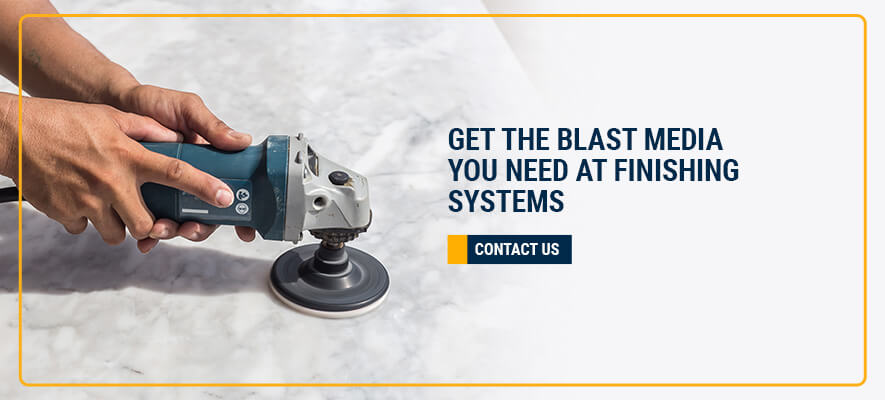In industrial and finishing operations, blasting media plays a critical role in surface preparation, cleaning, and polishing. Among the most commonly used abrasives are aluminum oxide and silicon carbide. Both offer unique advantages and are suited for different applications. Understanding their properties can help you make an informed decision based on your specific needs. Aluminum oxide is one of the most widely used blasting media due to its versatility, affordability, and durability. It’s particularly effective on painted surfaces, wood, and various metals. Available in three colors—pink, white, and brown—each type has distinct characteristics and uses. The white and pink varieties of aluminum oxide produce smoother finishes compared to the brown version. White aluminum oxide is ideal for delicate materials like wood and lacquered surfaces because it generates less heat and performs well in precision work. Pink aluminum oxide is best suited for softer woods and grinding or sharpening tasks. However, these types tend to be less durable than the brown variant. Brown aluminum oxide is known for its toughness and long-lasting performance, especially when working with harder materials. Its grains are semifriable, meaning they self-sharpen as they break down, which helps maintain efficiency over time. This makes it excellent for removing larger burrs and leaving behind a finer finish. Brown aluminum oxide is also highly recyclable, making it a cost-effective option for frequent use. Silicon carbide is a very hard and sharp abrasive, often used for materials such as ceramics, glass, stone, marble, and certain plastics. Its fine, pointed edges allow it to etch surfaces effectively, preparing them for coatings or finishes. It’s also suitable for both direct-pressure and suction-based systems, offering flexibility in application. While silicon carbide is durable and efficient for softer materials, it can wear out faster when used on harder surfaces like steel. Additionally, its high hardness may cause excessive heat generation, which can be a drawback when working with sensitive materials like aluminum. However, it can be combined with aluminum oxide to achieve a balanced finish—using aluminum oxide for general cleaning and silicon carbide for final polishing. Silicon carbide is also safe for use in wet or volatile environments. It doesn’t produce static electricity and has minimal magnetism, making it a safer choice in certain conditions. It comes in both friable and non-friable forms, giving users more control over wear and longevity. When it comes to grinding steel, aluminum oxide is typically the better choice. While silicon carbide is harder, it’s also more brittle, which means it breaks down quickly on tough surfaces. Using silicon carbide on steel would require multiple passes to achieve any noticeable result. On the other hand, brown aluminum oxide is highly durable and provides a smooth finish without excessive wear, making it the preferred option for steel. Aluminum is a softer metal that requires careful handling to avoid overheating. A combination of aluminum oxide and silicon carbide is often ideal. Silicon carbide is great for low-tensile strength metals like aluminum, as it offers a clean, even finish without generating too much heat. White aluminum oxide is also a good choice for aluminum surfaces, as it maintains precision while minimizing thermal buildup. Your choice between aluminum oxide and silicon carbide depends on the material you're working with and the desired outcome. For high-tensile strength materials like steel or alloys, aluminum oxide is usually the best fit. For softer or non-metallic materials, silicon carbide tends to perform better. Using a combination of both abrasives can yield the best results in many cases, especially for precision finishing. Whether you're working on metal, wood, or composite materials, blending the two can help optimize efficiency and quality. If you're looking for high-quality blasting media tailored to your specific applications, Finishing Systems has you covered. We offer a wide range of aluminum oxide and silicon carbide products, including friable, semi-friable, and standard options. Our team can guide you in selecting the best abrasive for your project, ensuring optimal performance and cost-efficiency. Contact us today to learn more about our blasting solutions and how we can support your finishing goals. Ring Forgings,Large Diameter Ring Forgings,Ring Forgings For Valve,Steel Ring Forgings Jiangyin Mitoo Precise Co.,Ltd. , https://www.mitoosteel.com
Aluminum Oxide vs. Silicon Carbide
Updated: November 24, 2023
Aluminum Oxide Abrasives
Pink and White Aluminum Oxide
Brown Aluminum Oxide
Silicon Carbide Abrasives
Which Is Better for Grinding Steel?
Which Is Better for Grinding Aluminum?
How to Choose Between the Two

Get the Right Blast Media for Your Needs